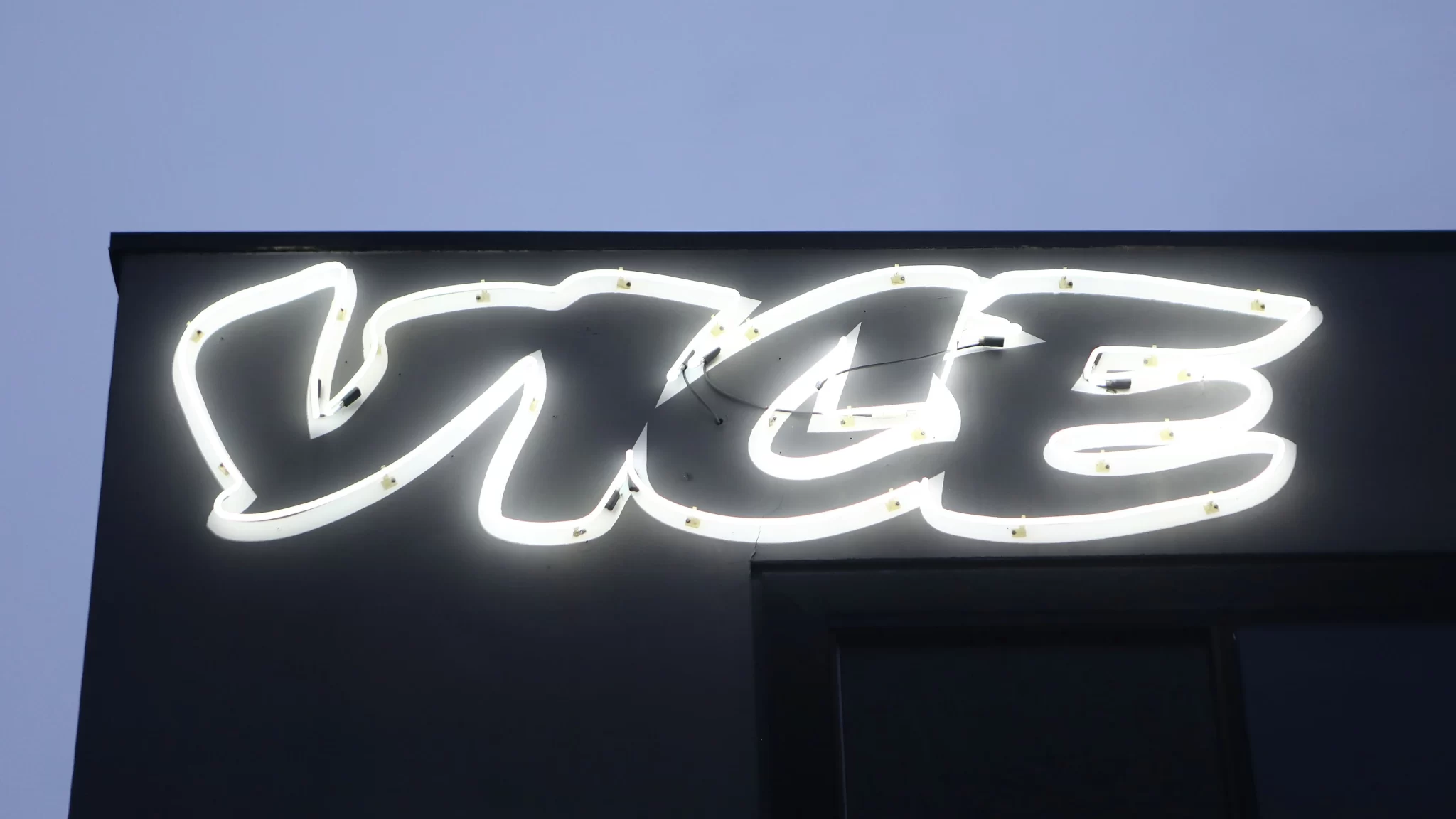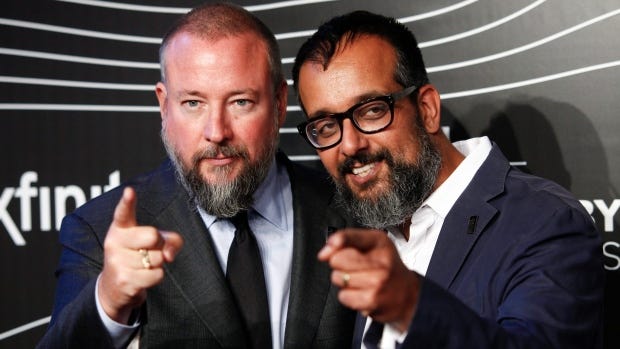News
The Hollowing Out Of Vice And BuzzFeed Marks The End Of The Digital Media Revolution

Its two leaders, Vice Media and BuzzFeed, are in a frenzy of retreat, giving up much of their internet empires to retain what remains of their fundamental assets. Having once threatened to upend the whole industry and usher in a new era of news delivery and commercialization, the former digital media darlings are now simply trying to survive in any way they can.
As they go, their vast newsrooms, previously filled with rows of journalists, turn off the lights and close their doors. BuzzFeed, which has already reduced its workforce through many layoffs, stated this week that it would cut another 16% of its workforce as part of a “planned strategic restructuring” to minimize expenses. Vice Media also said on Thursday that it will let off hundreds of employees as it transitions away from publishing on its website and towards a studio-like company.
The Hollowing Out Of Vice And BuzzFeed Marks The End Of The Digital Media Revolution
“It’s devastating to have a group of reporters who have made such a significant impact on the world have their jobs end in this way,” one top Vice Media colleague told me about the unfortunate situation.
All digital publishers have experienced difficulty in recent years as a result of the industry’s tough headwinds, which include a softening advertising market under the control of Big Tech heavyweights and declining referral traffic, not to mention the impending threat of artificial intelligence that Big Tech titans have brought about.
Vice Media and BuzzFeed have served as the industry’s two most visible pioneers, paving the (short) way for additional digital-first startups. At one point, the publications instilled panic in their traditional media competitors, each valued in the billions of millions, making headline-grabbing hires and threatening additional upheaval.
They’re currently trying to keep their heads above water.
The death of Vice Media, as we know it, is particularly difficult to digest. Staffers at the outlet, who I’m told will be laid off if they lose their jobs, became aware of a problem many hours before CEO Bruce Dixon delivered his memo. Before the announcement, the tone inside Vice Media was bleak.
Staffers struggled to work amid rumours about the outlet’s destiny, with one saying it was like “the violinists playing aboard the sinking Titanic.”
Then, late in the 3 p.m. ET hour, The New York Times’ Benjamin Mullin verified their worst concerns, announcing that huge layoffs were imminent. Finally, at around 5 p.m. ET, Dixon publicly informed his staff of the terrible decision and significant changes the business would make under its new private equity owners, with support from Fortress Investment Group.
Dixon stated in his email that Vice Media had determined that it was “no longer cost-effective” for the firm to distribute its digital content independently. Instead, he claims that its two leaders, Vice Media and BuzzFeed, are in a frenzy of retreat, giving up much of their internet empires to protect what remains of their primary assets. Having once threatened to upend the whole industry and usher in a new era of news delivery and commercialization, the former digital media darlings are now simply trying to survive in any way they can.
As they go, their vast newsrooms, previously filled with rows of journalists, turn off the lights and close their doors. BuzzFeed, which has already reduced its workforce through many layoffs, stated this week that it would cut another 16% of its workforce as part of a “planned strategic restructuring” to minimize expenses. Vice Media also said on Thursday that it will let off hundreds of employees as it transitions away from publishing on its website and towards a studio-like company.
“It’s devastating to have a group of reporters who have made such a significant impact on the world have their jobs end in this way,” one top Vice Media colleague told me about the unfortunate situation.
All digital publishers have experienced difficulty in recent years as a result of the industry’s tough headwinds, which include a softening advertising market under the control of Big Tech heavyweights and declining referral traffic, not to mention the impending threat of artificial intelligence that Big Tech titans have brought about.
Vice Media and BuzzFeed have served as the industry’s two most visible pioneers, paving the (short) way for additional digital-first startups. At one point, the publications instilled panic in their traditional media competitors, each valued in the billions of millions, making headline-grabbing hires and threatening additional upheaval.
They’re currently trying to keep their heads above water.
The death of Vice Media, as we know it, is particularly difficult to digest. Staffers at the outlet, who I’m told will be laid off if they lose their jobs, became aware of a problem many hours before CEO Bruce Dixon delivered his memo. Before the announcement, the tone inside Vice Media was bleak.
Staffers struggled to work amid rumours about the outlet’s destiny, with one saying it was like “the violinists playing aboard the sinking Titanic.”
Then, late in the 3 p.m. ET hour, The New York Times’ Benjamin Mullin verified their worst concerns, announcing that huge layoffs were imminent. Finally, at around 5 p.m. ET, Dixon publicly informed his staff of the terrible decision and significant changes the business would make under its new private equity owners, with support from Fortress Investment Group.
The Hollowing Out Of Vice And BuzzFeed Marks The End Of The Digital Media Revolution
Dixon stated in his email that Vice Media had determined that it was “no longer cost-effective” for the firm to distribute its digital content independently. Instead, he said, the company will “look to partner with established media companies to distribute our digital content, including news, on their global platforms, as we fully transition to a studio model.” There has yet to be a word on who these partners might be.
The business also must decide what to do with Refinery29 and Motherboard. Dixon stated Vice Media is in “advanced talks” about selling the former. I’m informed that many negotiations are taking place about what to do with Motherboard, with one option being to license the tech-focused vertical to another company that would operate it, similar to the Sports Illustrated approach.
According to what I learned Thursday, executives are still determining if the stuff the site has produced over the years will remain online.
Meanwhile, the hundreds of employees who were left wondering what would happen to them would have to wait until the weekend to find out if they were laid off. It was a nasty act. Regardless, employees in the digital publishing department have mostly accepted their destiny.
“I think most of us have seen the writing on the wall: there are simply not enough lifeboats, and it is highly unlikely that the skeleton crew of us on digital news will be invited onboard one,” the employee told me, comparing Vice Media to the sinking Titanic.
Following the massive layoffs, it isn’t easy to picture the brand remaining the same. They never are. The internet is replete with zombie periodicals bearing famous names but lacking souls, reduced to mere shells of their former dynamic selves.
The Hollowing Out Of Vice And BuzzFeed Marks The End Of The Digital Media Revolution
Surprisingly, when the Vice Media crew learned the tragic news Thursday, co-founder Shane Smith, whose salesman-like confidence earned him over $100 million from the outlet, was nowhere to be found. The company would “look to partner with established media companies to distribute our digital content, including news, on their global platforms, as we fully transition to a studio model.” There has yet to be a word on who these partners might be.
The business also must decide what to do with Refinery29 and Motherboard. Dixon stated Vice Media is in “advanced talks” about selling the former. And I’m informed that many negotiations are taking place about what to do with Motherboard, with one option being licencing the tech-focused vertical to another company that would operate it, similar to the Sports Illustrated approach.
According to what I learned Thursday, executives are still determining if the stuff the site has produced over the years will remain online.
Meanwhile, the hundreds of employees who were left wondering what would happen to them would have to wait until the weekend to find out if they were laid off. It was a nasty act. Regardless, employees in the digital publishing department have mostly accepted their destiny.
“I think most of us have seen the writing on the wall: there are simply not enough lifeboats, and it is highly unlikely that the skeleton crew of us on digital news will be invited onboard one,” the employee told me, comparing Vice Media to the sinking Titanic.
Following the massive layoffs, it isn’t easy to picture the brand remaining the same. They never are. The internet is replete with zombie periodicals bearing famous names but lacking souls, reduced to mere shells of their former dynamic selves.
Surprisingly, when the Vice Media crew learned the tragic news Thursday, co-founder Shane Smith, whose salesman-like confidence earned him over $100 million from the outlet, was nowhere to be found.
SOURCE – (CNN)


































